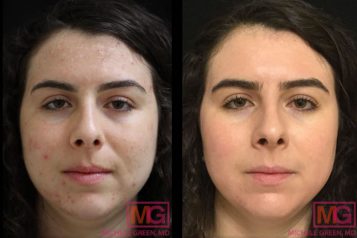Facelift surgery is one of the most common and well-known forms of plastic surgery to date. Women and men seek this procedure to address sagging skin in the cheeks, jowls, and neck. Oftentimes, facelift surgery has a negative connotation for fear of looking fake, but with the right expert you can give years back to your face while restoring your natural beauty.
We talked to two of our Haute Beauty Face Experts to find out how to achieve the most natural results for facelift surgery and what you should be looking for in choosing your plastic surgeon.
 Photo Credit: Shutterstock
Photo Credit: Shutterstock
Finding the right doctor for your facelift
“There are a number of questions that patients should ask of their doctors when they are seeking face and neck lift surgery. For starters, it is good to find out if they are board-certified by the American Board of Facial Plastic & Reconstructive Surgery or the American Board of Plastic Surgery. Also, how many facelift surgeries do they perform a year,” says Haute Beauty Face Expert Dr. Jason Bloom of Bloom Facial Plastics base in Pennsylvania.
Dr. Bloom adds, that it is also important to look a the before and after photos of patients to show what the healing process is like and adequately plan for the procedure. “It is like reading the cover and then the last page of a book. You don’t know the whole story! By showing the healing process, I feel that patients are better able to plan their lives and surgery and make sure that their healing is going as planned,” he adds.
Limitations
There are *some* limitations or important things your surgeon takes into consideration when planning their approach to your facelift surgery.
“Some of the most important things that I consider when performing face & neck surgery is the status of the neck and the tissue laxity in the face,” says Dr. Bloom. This helps Dr. Bloom determine the right course of treatment that’s tailored specifically for you.
“Facelift surgery is a surgery of release and resuspension. If the tissue isn’t freely mobile, the face must be released at the facial retaining ligaments before the tissue is resuspended. If it is not released, you are constantly going to be lifting the tissue that is bound down and restricted, limiting the extent of the lift,” he adds.
Recovery
“There are many different types of facelifts ranging from simple facial skin tightening to sophisticated, deep layered techniques, and recovery is related to the amount of surgical intervention that was performed,” says Dr. G. Hunt Neurohr, Haute Beauty Face Expert from Dallas.
“A full layered facelift for midface support takes about three weeks for the patient to re-enter the workplace, engage in general social functions, and return to full exercise regimens. Recovery for simple skin tightening procedures can occur in seven to 10 days. The key to the optimal surgical result to recovery time depends on the accuracy of the preoperative diagnosis and the proficiency of the surgeon performing the operation. Attention to detail, gentle handling of the tissues, proper repositioning of deep layer tissues to achieve the natural shape, and finesse in tailoring the skin to achieve non-detectability of scars are key to the best outcomes and quickest recoveries,” he adds.
 Photo Credit: shutterstock
Photo Credit: shutterstock
Results
There is some responsibility on the patients to assure they heal properly and yield the best results. This time is extremely crucial for patients to follow the doctor’s orders, here’s what Dr. Neurohr has to say:
“Patients who follow a good nutrition and exercise plan will achieve the best results with regards to recovery. I recommend to my patients a specific vitamin and supplement regimen to follow two weeks prior to surgery and two weeks after in order to optimize recovery and healing. It is important for patients to study their post-operative protocols and be diligent in following them.”
Dr. Nuerohr’s, rules to recovery:
• Use cold packs for two days
• Drains will be removed within one to four days
• Be sure to sleep on your back
• Keep your chin and neck at an angle of 90 degrees for nine days
• Early ambulation can begin two to three days after surgery such as sitting, standing or walking
• Physical activity can be increased daily (i.e. walking up to a half-mile)
The first set of sutures is removed after four days and the second set is removed after nine days. Patients should not drive until after their second set of sutures have been removed. In addition, they should continue to increase their heart rate after 10 days with light exercise for the first two weeks and back to their regular fitness routine after three weeks (i.e. jogging, golf, tennis, etc.)
For more information, visit Dr. Brian A. Levine's social media:

























